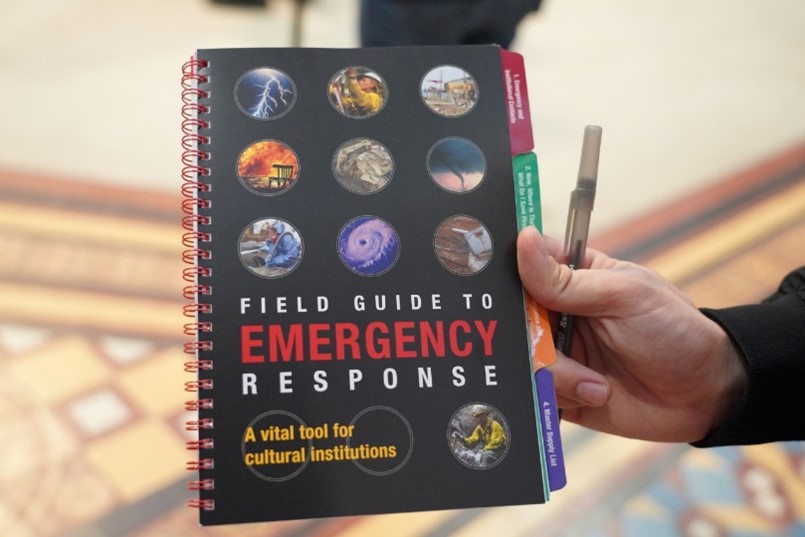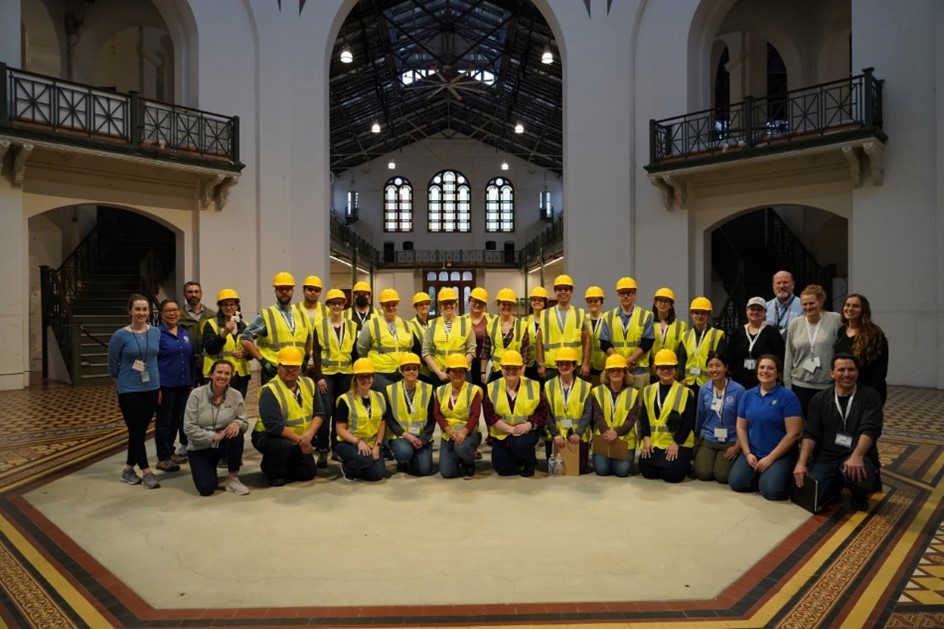Without proper disaster planning, the safety and security of those we care about and the things we cherish may be in jeopardy. While each of us can take small steps to protect ourselves and our loved ones, preserving important items can require special attention and planning. That’s why FEMA has partnered with the Smithsonian Institution to help protect cultural heritage artifacts across the country through the Heritage Emergency National Task Force (HENTF).
The task force, created in 2015, aims to protect our nation’s cultural heritage by training cultural stewards (such as museum curators), first responders and emergency managers to respond to incidents at cultural institutions and historic sites in a manner that preserves important artifacts. Much of the training is conducted through the Heritage Emergency and Response Training (HEART) program.
Smithsonian Cultural Rescue Initiative Training Program Manager Stacy Bowe says the work HEART does is vital to preserving important objects and artifacts.
“Protecting cultural heritage in this country is a tough job,” Bowe said. “The HEART program helps improve the capacity of those who are charged with protecting it on a day-to-day basis by increasing their understanding of what to do in the event of a disaster.”
From Dec. 5 – 9, 2022, the HEART program held one of these training opportunities. This year’s sessions prepared participants in the following topics, all focused on institutions that hold collections and records in the public trust:
- Threat and hazard identification and risk assessment.
- Damage assessment.
- Rapid documentation.
- Emergency evacuation and salvage.
- Handling damaged collection materials.
- Crisis communication.
- And team building.
FEMA’s Office of Environmental Planning and Historic Preservation HENTF Coordinator Lori Foley led much of the training and provided participants with valuable information.
“HEART programming is a mix of tutorials and lectures, group work and discussions, practical exercises, and educational tools,” Foley said. “Cultural stewards learn about threat and hazard identification and how to assess risks. Emergency managers learn about the hazards that can be found in collections, such as arsenic-containing taxidermied specimens and radioactive geological specimens.”

HENTF’s “Field Guide to Emergency Response” is one of many resources given to participants to prepare them to address emergencies affecting cultural institutions.
The training also featured a simulation for the class to practice their newly developed skills. Participants underwent a fictional evacuation of the state museum of “Smithsonia” which, in reality, was the first floor in the Smithsonian’s 1881 Arts and Industries Building.
During the simulated evacuation, the class broke out into Incident Command System (ICS) groups, such as logistics, planning and operations, and carried out a situation analysis to determine the nature of the emergency and steps to protect the collections.
Following the ICS structure, the group nominated South Dakota State Historical Society Collections Management Specialist Corey Christianson as the Incident Commander to lead the simulation.
“The best part of HEART was being able to apply all of what we learned in scenarios,” said Christianson. “Having an ICS also allows for more focus on the artifacts and the process of evacuation or salvage, rather than the chaos of trying to organize.”

HEART participants creating an inventory of artifacts during the simulation.
Together, the group developed an action plan, created an inventory of the collection to be evacuated and relocated artifacts to a safe and accessible area, putting what they learned into practice.
The HEART program is just one example of how FEMA works with its partners to ensure that the nation is prepared to address all threats and hazards.
Bowe says her favorite memory of the weeklong training was hearing from program graduates who have either been called in to help in a disaster situation involving cultural heritage or finding out how they have utilized what they learned in the program. “We’ve had several HEART graduates share these experiences with future HEART classes, which proves to us that our content works, and it’s important to keep sharing it as widely as possible,” says Bowe.
If you are interested in learning about how you can protect your family’s treasure, visit the FEMA Weekly article, Take These 4 Steps to Save Your Family Treasures After a Disaster.
To learn more about HEART, visit Heritage Emergency and Response Training (HEART) - Smithsonian Cultural Rescue Initiative (si.edu). For questions, email the Heritage Emergency National Task Force at hentf@si.edu, or the Smithsonian Cultural Rescue Initiative at culturalrescue@si.edu.


